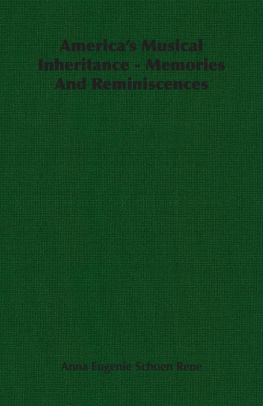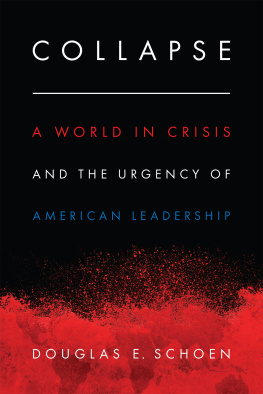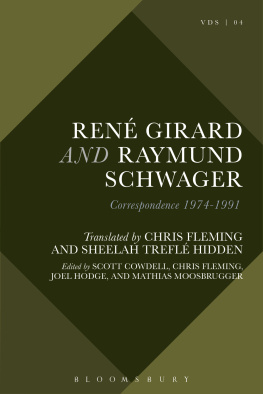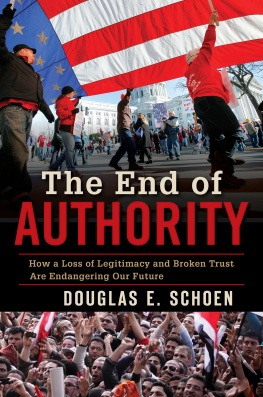Americas
Musical Inheritance
MEMORIES AND REMINISCENCES
BY
ANNA EUGNIE SCHOEN-REN
ILLUSTRATED
G. P. PUTNAMS SONS
NEW YORK, 1941
COPYRIGHT, 1941, BY G. P. PUTNAMS SONS
All rights reserved. This book, or parts thereof, must
not be reproduced in any form without permission.
MANUFACTURED IN THE UNITED STATES OF AMERICA
Dedicated
To the Memory of
PAULINE GARCIA-VIARDOT
By Her Devoted Pupil and Friend
Pauline Garcia-Viardot
FOREWORD
IF THERE IS ONE lack in our musical life today that justifies our harking back a little ruefully to more or less legendary times, it is the want of dominating personalities in the teaching profession. Great singers, pianists, violinists, cellists and other executants come and go. So do great composers and conductors. This generation has known its fair share of all, including singers, even though this is more obviously a heyday of conductors than it is a golden age of song. But much as we may admire the most successful of contemporary vocalists, we do not associate their prowess, ordinarily, with the names of world-famous teachers, as was the case in the last so-called Golden Agewhen the names of Mathilde Marchesi; the Lampertis, father and son; Sangiovanni; Vanuccini; Sbriglia; Manuel Garcia and his sister, Mme. Garcia-Viardot, among others, meant quite as much in the world of singers as those of any of their illustrious pupils. These masters of the voice were sought after by ambitious students from the four quarters of the globe. Their studios were regarded as way stations to fame. They did not escape disparagement. No teacherand, more particularly, no singing teacherdoes. But they were somebodies. They made their personalities felt, whether they taught well or ill.
Today, world personalities among teachers are so few that one turns to the author of these reminiscences as almost a sole exception in the sphere of the voice. There are, of course, many who are able; many who may rightfully be described as well known. But the eminence which Mme. Schoen-Ren has gained and held through many years as the heir and continuer of the teaching of the Garcias is not merely something of the success of her pupils. In it is the impact of a personality at once dominating and endearing, with rock-ribbed honesty as the basis of her entire relation to her chosen profession, and a background of musical life in Europe and America that most of us can only envy. One turns from such chapters as Johannes Brahms As I Knew Him and Garcia at Cricklewood to those on Pioneering in the Middle West and Das Lied, with the thought that the title of this volume is precisely the right one, in that the author is herself a significant symbol of Americas Musical Inheritance.
OSCAR THOMPSON
Executive Director, Musical America
Music Critic, The New York Sun
AUTHORS PREFACE
Although I begin these reminiscences with a brief record of my early years, and with a discussion of some historic figures and events which lend significance to them, this personal story is but a prelude. My main purpose in writing this book is to preserve for musicians and music-lovers of the future those facts and developments in the history of music, particularly of singing, which I witnessed in the course of a long full life.
By far the most significant were the years I was privileged to spend with the two GarciasPauline Garcia-Viardot and Manuel, her brother: Pauline Viardot whose pupil I was for eighteen precious years and who guided me in my profession also as a teacher; Manuel under whom I pursued special studies in the training of male voices. They were members of that illustrious family of singers and teachers whose fame is a by-word in the world and whose genius rendered service of inestimable value to vocal art from the end of the eighteenth century into the opening decade of the twentieth. They were an integral part of the musical and artistic world of Europe, closely associated with most of the great names making up that world. But few Americans of today know that a Garcia introduced operatic music to the young United States in 1825that we in this country, too, are indebted to this family for a tradition of culture.
Throughout my own long association with Mme. Garcia-Viardot, she told me many things about her family, besides her instruction on the development of scientific vocal art,stories of struggle and successintimate and amusing incidents of family life. I made notes of all these for I recognized I was in possession of material unknown to others and I wanted to document it. I deferred the labor of this work repeatedly, however, despite the urging of those who shared my feeling of its historical valueWilliam J. Henderson, the eminent music critic, and Mme. Marcella Sembrich and Rubin Goldmark, my colleagues at the Juilliard Graduate School of Music. The death of all three of these good friends has given me the sharp realization of a duty unperformed.
I remember once asking my dear Viardot why she had not written, for the benefit of future generations, something about her distinguished career and interesting life. Her answer was, If my life has been worth recording, others might do so. With this beautiful example of modesty before me, I feel diffident about recording my own history. My life, I know, has been important only for the effect it has had upon my profession. However, I realize that my place of birth and the strict disciplinary training of my youth have given me a different character and a different point of view from my American readersthough I have been an American citizen since 1896. It is with the hope that they may understand this difference better that I begin these reminiscences with stories of my early life. Many have thought me, perhaps, too severeToo frank and outspoken, to quote a European biographical sketch, But, withal, and in humbleness I continue to quote the words, A being relentless and unusually exacting, an artist and a woman who strove for the expression of the best and highest, never demanding as much from others as she did from herself.
As an authorized representative of the Garcia science of vocal art and as one of the last living intimates of the Garcias, 1 truly hope that my readers will take away with them something of interest and value from this record of the Golden Age of Song.
ILLUSTRATIONS
Pauline Garcia-Viardot
Chapter I
EARLY INFLUENCES
I RECEIVED MY FIRST singing lessons at the age of fourodd little lessonsfrom our household orderly, Matinetti. He was an all-round fine fellow, always ready to help us children out of our troubles. In his room behind the kitchen, my brother Otto and I used to sit on little stools, watching while he cleaned the uniforms, shoes, and other personal equipment of our large household, and listening to his fairy tales and songs. Matinetti was of Italian descent, though a native of Coblenz, and had a great store of both Italian and German folk-songs. Under his instruction, we not only learned many of these by heart, but acted them out dramatically. After the lessons, the doors to the kitchen would be thrown open, and we would give a performance before an almost tearfully admiring domestic staff. All this was carried on with utmost secrecyno one in the front of the house was aware of this initiation into the world of make-believe. I have always felt that this marked the beginning of my great desire for a public career as a singer. I began about that time to develop a lively imagination; and as I walked in the forests I would sing to myself and build dream castles by the hundredsalways of future triumphs as a singer.












